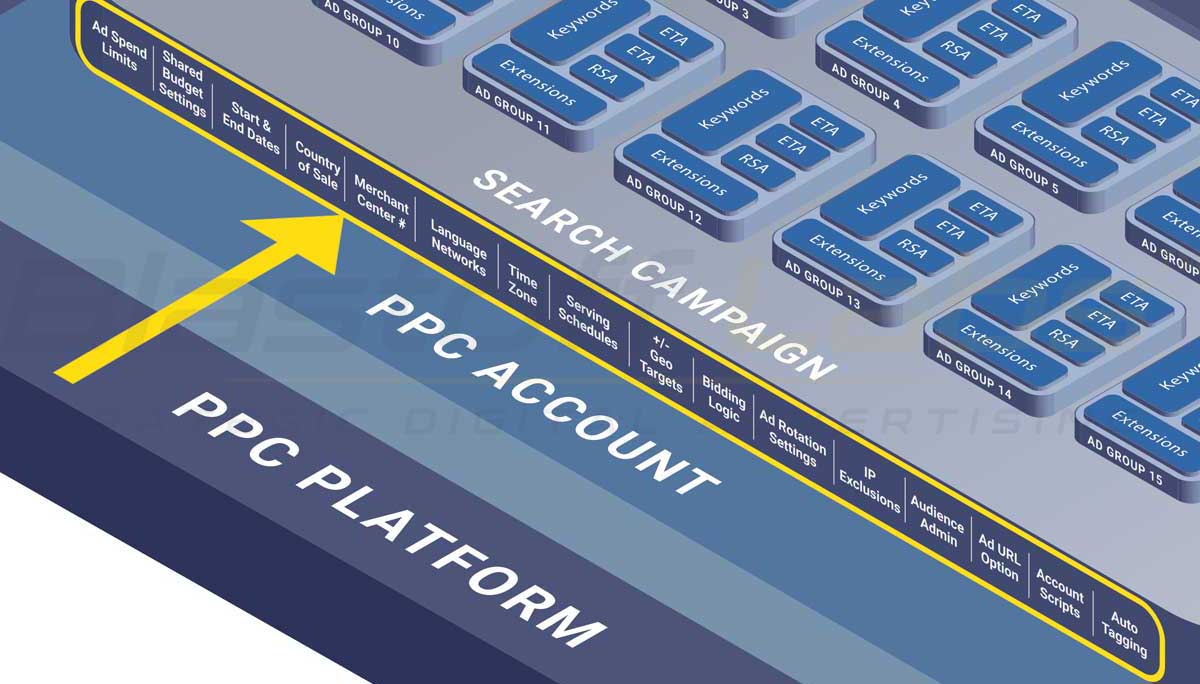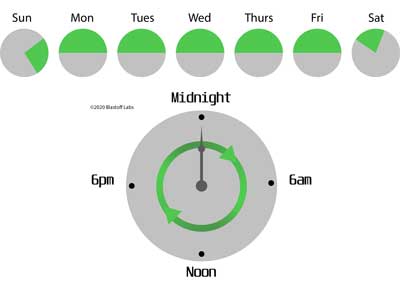
Campaign Serving Parameters
As illustrated in our search campaign object model in the header above, there are many search campaign serving parameters available to pre-configure. Let’s take a quick look at a few of those we consider most significant.
Search Campaign Daily Ad Spend
If a search campaign doesn’t have adequate daily ad spend, it may fall victim to the “digital cliff” phenomena which is seen in telecommunications, economics, and other quantum behaviors. When below the digital cliff threshold, the odds of success will dramatically decrease.
As a rule of thumb, a search campaign should be purchasing at least 15 to 20 clicks a day. By multiplying average CPC you can estimate a rough minimum daily ad spend for a search campaign.
Search Campaign Geo Targeting
The geographic targeting settings for a campaign determine where it is served. There are many ways to target campaigns and refine the targeting to optimize campaign performance.
The most common mistake we see is to target too large or diverse of an geographic region. The second most common mistake is to target too large of population for the ad spend in the campaign. Both of these mistakes can lead to unpredictable and erratic search campaign performance.
Search Campaign Bidding
Bidding control is central to PPC campaign optimization strategy. Bidding controls when a campaign participates in an auction for ad space, how it ranks in that auction, and which search engine result pages the ads appear on. There are many options for how to bid a campaign.
When new search campaigns launch, we manage them with manual bidding control; even semi-automated bidding (enhanced CPC) is avoided for the first week or two. This allows us to force as many keywords to serve as possible.
If automated bidding is used at launch, we’re trusting the platform too much to have “au prior” knowledge which is often wrong. Instead, we force the establishment of a baseline that’s useful moving forward.
Once you move into automated bidding, the ad platform is relatively free to pay whatever it wants (within some limits) for clicks. So a baseline is important to have as a reference.
Manual bidding is also the best way to force a new campaign to serve “out of the gate”, so enough data can be accumulated to migrate the campaigns onto automated bidding.
Search Campaign Schedule
We allow most b2c search campaigns to initially run 24x7x365. We then are able to use this baseline data to optimize the campaign schedule, as we establish what times and days are most effective.
Many campaigns perform well at surprising times – days of the week, and hours of the day you would not expect (see this article about a solar energy account).
In many b2b vertical markets, clicks are more costly and buying is more concentrated into office hours. We usually launch b2b campaigns setup to serve on weekdays only, and often not to serve after business hours. For US-targeted campaigns, we make sure East coast campaigns serve late enough to be visible for West coast end-of-day business traffic.
Search Campaign Ad Rotation
We launch most search campaigns with two extended text ads (ETAs). These ads are later complemented by a responsive search ads. This allows us to optimize faster versus starting with RSA in the ad mix.
By starting with ETA ads only is, we are able to optimize the campaigns faster in the early going. RSAs serve dozens of ad copy permutations and combinations. This is part of their machine learning process to determine which ad copy serves best. This slows down initial optimization of the campaign, and can wait for later.
So with two ETA ads in place, we initially force the ads to serve equally. This allows us to spot more quickly, the ad with superior-performing copy. We will go through several rounds of ad split testing before realeasing ad rotation settings to “serve best performing”.






